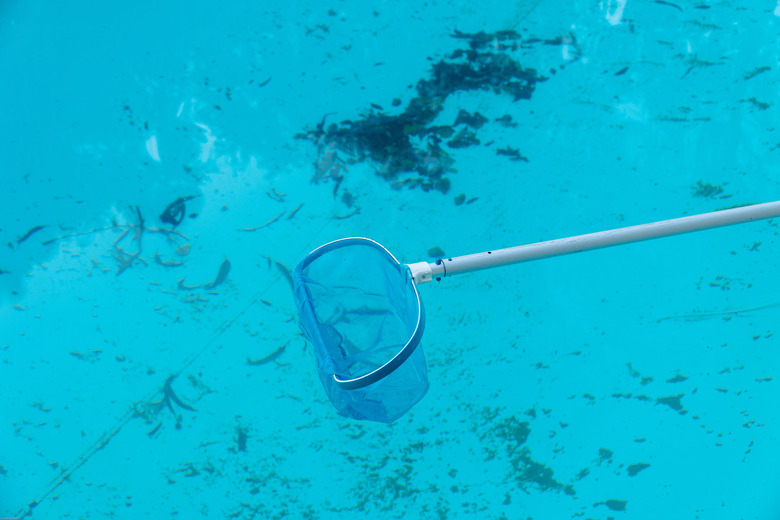How To Treat Tiny Worms In Your Pool
We may receive a commission on purchases made from links.
Pool water may be the last place you'd expect to find worms of any sort, but they're actually quite common. Tiny red worm-type creatures — bloodworms — are the larvae of midges, a small insect resembling a mosquito, with the name coming from the blood-red color of these larvae. The last thing you want to do is take a dip in your backyard pool with worms wriggling around with you. Learning how to treat the water for bloodworms and remove the debris lets you get back to enjoying your pool.
How Bloodworms Get Into the Pool
How Bloodworms Get Into the Pool
So, how exactly do bloodworms get into a pool? They appear because midges — the insects responsible for those tiny worms — lay eggs on top of the water surface. They usually lay eggs on stagnant and still water, but sometimes they choose swimming pool water as their egg-laying site.
In less than a week, the eggs hatch into tiny, wiggly creatures that turn darker red as they grow. They feed off of minuscule organic matter they find near the bottom, including microorganisms in a mucky pond and the dirt tracked into a swimming pool. These larvae remain for two to seven weeks, then turn into pupae and work their way to the water's surface after a few days, emerging as adult midges.
How to Treat the Pool Water for Bloodworms
How to Treat the Pool Water for Bloodworms
If your pool has bloodworms, the free chlorine concentration is probably too low, because chlorine is lethal to these larvae. Rather than simply bringing the chlorine level up to the required 1 to 3 parts per million, it's best to treat the worms as an algae infestation and shock the pool by raising the chlorine concentration to 10 ppm or more. Here's how to treat the pool water for bloodworms:
- Adjust the pH level to between 7.2 and 7.6. If the pH is too high, the shock treatment will be ineffective.
- If any worms survive the first shock treatment, repeat it.
- Vacuum the bottom of the pool to waste after shocking it to remove the dead larvae.
How to Remove Bloodworms From the Pool
How to Remove Bloodworms From the Pool
Cleaning the pool regularly removes bloodworms, stray earthworms that may have fallen into the pool, and any other type of worm, insect, or larvae present in the water. Here's how to remove bloodworms from the pool:
- Vacuum the bottom of the pool daily to remove and help prevent infestations of bloodworms.
- Use the skimmer to remove all debris floating on and suspended in the water. This debris may include insect larvae and pupae, as well as plant matter that such creatures eat.
- Check the pool filter for collected debris and worms each day. Empty and rinse the filter cartridge with a garden hose before placing it back into the filter housing. Read your pool filter manual for specifics about your filter because removal and cleaning methods may vary by model and brand.
- Look around the pool area for stagnant water, such as low spots on the pool deck where water can collect into puddles. Blot up the water, and clean the area.
